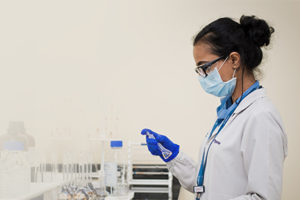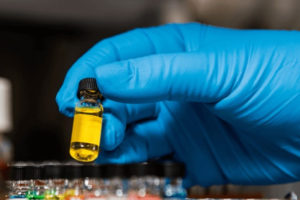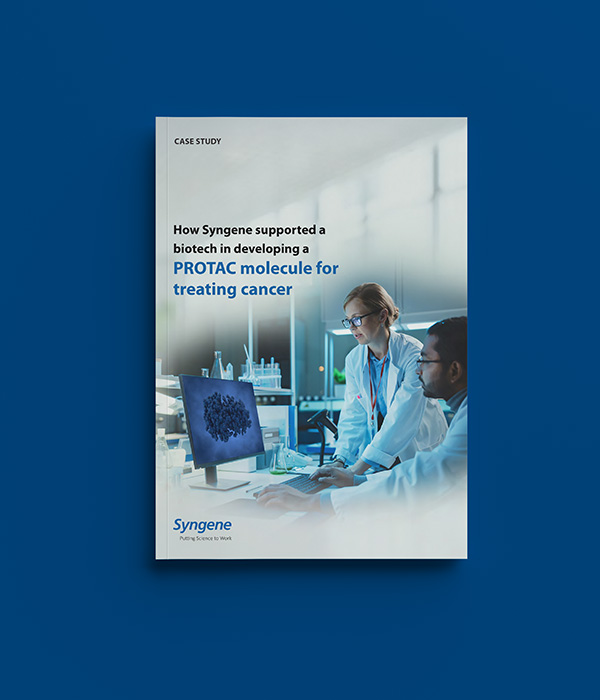About the Client
The client is a clinical-stage biotech company working in the field of targeted protein degradation (TPD) therapeutics. The company has developed a broad technology platform focused on high-value targets to deliver potent therapies and address the majority of proteins that evade inhibition. Its lead programs are focused on the receptors associated with various types of cancer.
The Requirement
The biotech company decided to partner with Syngene to develop its PROTAC molecule for treating cancer. The company selected Syngene based on our end-to-end expertise and strong track record in accelerating client PROTAC programs.
The scope of services was as follows:
- Process and analytical development for the specified target
- Pilot batch and manufacture of several kilograms of the drug product under cGMP conditions
- Facilitate US drug master filing as well as pre-approval inspection for the specified target and the main target being formulated for Phase-1 clinical trials
Challenges Versus Solutions delivered
Syngene encountered several scientific and technical challenges in the course of the project. Some of the major challenges are listed below, along with the solutions we used to resolve them.
Development phase | Challanges encountered | Solutions devised |
|---|---|---|
Discovery and Development | Effectively linking small molecules with a linker (ligase and ligand for the protein of interest) | We used extensive medicinal
chemistry and optimization efforts such as structure-activity relationship (SAR) studies to refine the design and synthesis of PROTACs. |
Selection of an effective linker | We undertook in-depth characterization and screening of ligases and structure-guided design to identify ligases with the desired selectivity and activity. | |
Addressing impurity and characterization issues | We developed analytical methods to address impurities of lower than 1 A% | |
Regio isomer formation of 70% | We used alternate reagents to address Regio isomer issues. Hence, we were able to control its formation to less than 30% | |
Complete conversion with yields not more than 35% | We undertook process optimization using the one-factor-at-a-time (OFAT) method and design of experiment (DoE) based experiments to address inconsistency across experiments. |
Development phase | Challanges encountered | Solution devised |
|---|---|---|
Chemistry manufacturing control (CMC) development | Process optimization, linker synthesis, conjugation, and purification issues | We applied quality by design (Qbd) in conjunction with the DoE approach to quickly identify the dependent and independent process factors, including optimizing the full-scale process. |
Issues with characterization processes as PROTACs are often heterogeneous, leading to variations in the linker region’s length and composition | We developed a robust analytical method that is sensitive and selective enough to detect any impurity or variation in the drug substance. | |
Dealing with solubility and poor bioavailability of PROTAC molecules | To address solubility and bioavailability challenges, we did the following: • Reduced the particle size • Increased the solubility by derivatizing into appropriate salt/polymorph • Derivatized with an appropriate labile-protecting group • Added appropriate excipients during formulation studies | |
Manufacturing under cGMP | Knowledge transfer from lab to plant | We ensured effective collaboration between process development scientists and manufacturing experts. We also undertook comprehensive process optimization and scale-up studies to facilitate a smooth transition to large-scale production. |
Reproducibility at a large scale since PROTACs are extremely sensitive when subjected to scale-up operations. | We mixed utilities effectively to quantify the mixing regime and identify the appropriate process vessels on the scale. | |
Batch-to-batch consistency | We implemented stringent quality control measures, including in-process controls, release testing, and batch record review, to help maintain batch-to-batch consistency during manufacturing.
We used process simulation and modeling techniques to develop and scale up the process. We enabled visualization of the process performance for lab-scale operations and created the process for commercial scale-up operations. |
Business Outcome
Syngene successfully developed and manufactured the PROTAC molecule and its intermediates under cGMP conditions. Within 12 months, we delivered several hundred kilograms of PROTACs molecules for Phase 1a and 1b clinical trials. We hope to partner with the client in further phases of development, including API development and commercialization.
Conclusion
With 450+ dedicated TPD scientists and more than 15 global clients, Syngene has a strong track record of accelerating PROTAC programs for clients. Over the years, we have developed significant expertise in discovering, developing, and manufacturing multi-kilo PROTACs under cGMP conditions – clinical to commercial. By partnering with us, biotech companies can scale operations quickly and cost-effectively and bring treatment and therapies to market in the shortest possible time.
To know more about our PROTAC services, contact our team.







